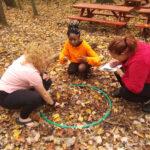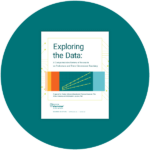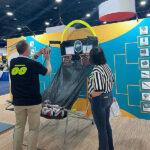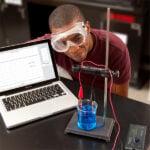
Sharing ideas and inspiration for engagement, inclusion, and excellence in STEM

Dr. Ashlie Denton is a senior researcher in equitable learning environments at Education Northwest, an education research nonprofit based in Portland, Oregon. She is the author of a 2021 report titled “The State of STEM Learning.” Dr. Denton’s work includes evaluating research-based best practices for project-based learning and out-of-school-time STEM programming. She recently discussed with Vernier the research basis for a whole-student approach to STEM education. The interview has been edited for length and clarity.
Why is STEM education important for the future workforce?
In recent years, we’ve had a dramatic uptick in the number of STEM career opportunities. These jobs are significantly better paid than non-STEM occupations, and they are expected to more than double in growth over the next few years. However, in the United States, we have a very low rate of STEM understanding and proficiency among high school graduates, especially compared with other countries.
This means now, more than ever, quality STEM education is needed to build access to opportunity for all students.
Please describe the goals the National Science and Technology Council (NSTC) has for STEM education and what they mean for a whole-student approach to STEM education.
The NSTC has three main goals for STEM education in the United States: build strong foundations for STEM literacy; increase diversity, equity, and inclusion in STEM; and prepare the STEM workforce for the future.
First, as I said before, all workers need to be STEM literate so that they can be successful in their jobs. But people also need STEM literacy to be successful members of our communities—to be prepared to participate in civil society, you need to have a basic understanding of STEM. Consider some of the major issues that we’re facing today, like COVID vaccines and climate change.
Having a basic foundation of STEM literacy helps ensure that you’re capable of making informed decisions.
Second, Black and Hispanic workers, women, first-generation college students, and individuals who come from low-income families have historically had less access to high-paying STEM careers. However, providing all learners with high-quality STEM opportunities benefits everyone. Not only does this ensure that the STEM field is more inclusive, it also helps build a diverse STEM workforce that can provide products and services that address all consumers’ needs.
Finally, preparing individuals for the STEM workforce of the future includes authentic learning experiences—making sure that everyone is able to support those key sectors of the economy by having hands-on, engaging learning experiences that will help prepare them to be productive members of the workforce.
Looking ahead, what does STEM education need to look like?
STEM learning has to be interdisciplinary, student-centered, and inclusive of a broad set of ways of understanding the world.
Take math, for example. For so long, we have looked at math in a silo, but we need to engage students in a way that they understand how math translates to the real world. This can really help motivate students to engage more in STEM learning and provide a better foundation for their understanding of STEM concepts.
Cultural relevance is also a big issue. Because, within STEM, a lot of the barriers come from students not identifying as a STEM learner. But if you use a culturally responsive framework, combined with authentic learning experiences, students can start to see themselves as STEM learners. This may or may not mean that they choose a STEM career path, but it supports their ability to engage in the world. Civil society relies on everyone having STEM literacy and seeing themselves as someone who can investigate, understand, and engage with STEM concepts.
Please expand on the importance of the following research-based best practices for STEM learning: create culturally relevant content, develop STEM literacy, and incorporate 21st-century skills.
Having culturally relevant opportunities can really help students identify themselves as learners more broadly and identify as STEM learners specifically. Whenever you look across different research-based practices and opportunities, those that involve culturally relevant content and projects for STEM learning are much more likely to succeed with students.
When you provide culturally relevant, project-based, and engaging learning experiences, students have an opportunity to draw from their own lives. This really validates their experiences and the assets they bring with them to the classroom—which, in turn, helps them become more active and engaged in STEM learning.
Growth mindset and STEM literacy are very tied together. It’s an opportunity to make mistakes and continuously try again. That helps to build an understanding of the way things work.
Being able to “fail forward” is a key element of STEM learning and STEM literacy.
As for 21st-century skills, such as critical thinking, communication, creativity, flexibility, having initiative, having a positive attitude and work ethic—they are all tightly related to authentic STEM learning experiences. STEM approaches that support student learning significantly increase students’ adoption of 21st-century skills, and they build students’ growth mindset by encouraging perseverance and making it OK to fail. This is particularly important for students of color.
How do you think Vernier can help create successful and inclusive STEM education?
Historically, the way that we’ve approached STEM—as a prescribed set of practices, like a lab—is not going to take us where we need to go with STEM literacy. The world is changing too rapidly.
Helping educators offer hands-on, engaging, and student-centered STEM learning is a real opportunity for growth for Vernier.
In addition, Vernier can help educators create culturally relevant experiments and projects, as well as provide educators with examples of ways that STEM concepts can connect to the lived experiences of their students. Educators could pick and choose from these examples and adapt them to their classroom.
Unfortunately, educators are so overloaded. It’s important to provide them with an easy-to-use suite of services or opportunities that can help them build their knowledge and understanding and then support them as they implement these new strategies and approaches. Often, once educators start doing this type of work, it builds their capacity to do this work in other areas—and it all becomes easier.
Share this Article
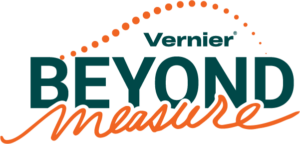
Sign up for our newsletter
Stay in the loop! Beyond Measure delivers monthly updates on the latest news, ideas, and STEM resources from Vernier.


